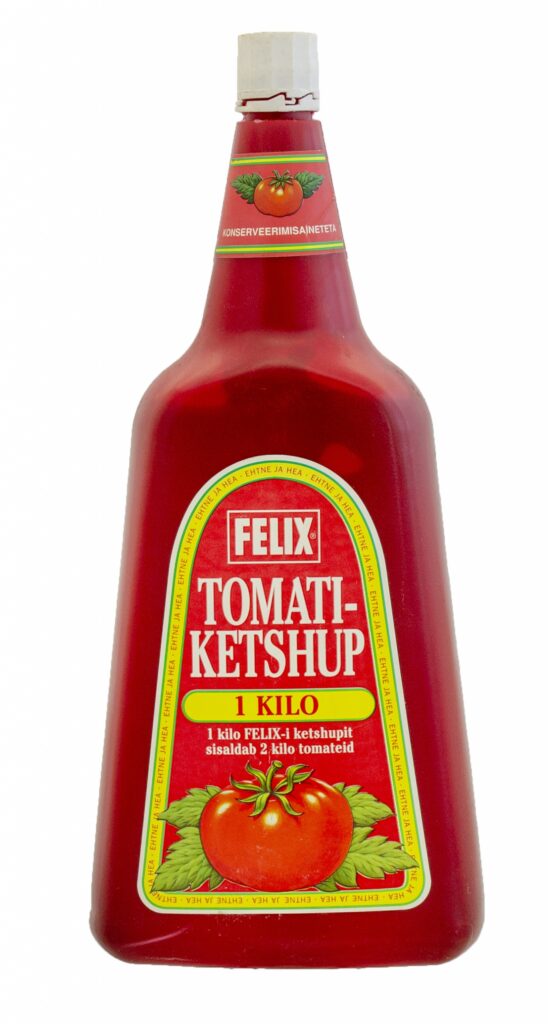

Ketchup

Felix tomato ketchup, Estonia’s favourite ketchup, has been available to local consumers since 1993. That was the year AS Põltsamaa Felix (ETK and AB Felix) was established as a joint venture and the sale of the legendary red condiment took off in Estonia.

Nearly two million kilograms of ketchup are consumed in Estonia every year. While the product range has become varied in recent times, the classic tomato ketchup continues to reign supreme.
That averages out to about 1.6 kilos of ketchup per person a year and it’s no surprise that most of this is consumed during the barbecue season from May to September. This is also when Felix annually holds its midsummer consumer contests and broadcasts fun clips featuring the Tomato Boy.

Felix ketchup uses tomato puree made from tomatoes grown in the best tomato growing regions of the world – the Mediterranean and California. High-quality tomato paste is key to everything, because it is the only way ketchup can taste truly rich and succulent.


Surprising history
Even though historical records suggest that ketchup and its name – ge-thcup or koe-cheup – originated in China 300 years BC, the original ketchup had nothing to do with the condiment we know today. The product originally known as ketchup was made through fermentation using ingredients such as fish bones, meat strips and soy beans. This produced a thick and long-lasting paste that served as a dressing and seasoning. British explorers and merchants took the original concept and recipe to Europe, where enthusiasts soon started to modify it.
The 18th century was the Golden Age of ketchup. Cookbooks included recipes for ketchup made from oysters, mussels, mushrooms, walnuts, lemons, celery and even fruit (such as plums and peaches). The ingredients were usually boiled to a syrupy consistency or left to macerate with salt for an extended period. Both processes resulted in a highly concentrated salty and spicy flavour bomb that could be kept for a long time.
The first recipe for tomato ketchup was written down by James Mease, an American scientist from Philadelphia, in 1812. The biggest problem with the first tomato ketchups was its shelf life as they had a tendency to start fermenting quickly. The addition of vinegar helped solve this issue and it is still present to a greater or lesser extent in almost all ketchups, along with salt, sugar and other seasonings.